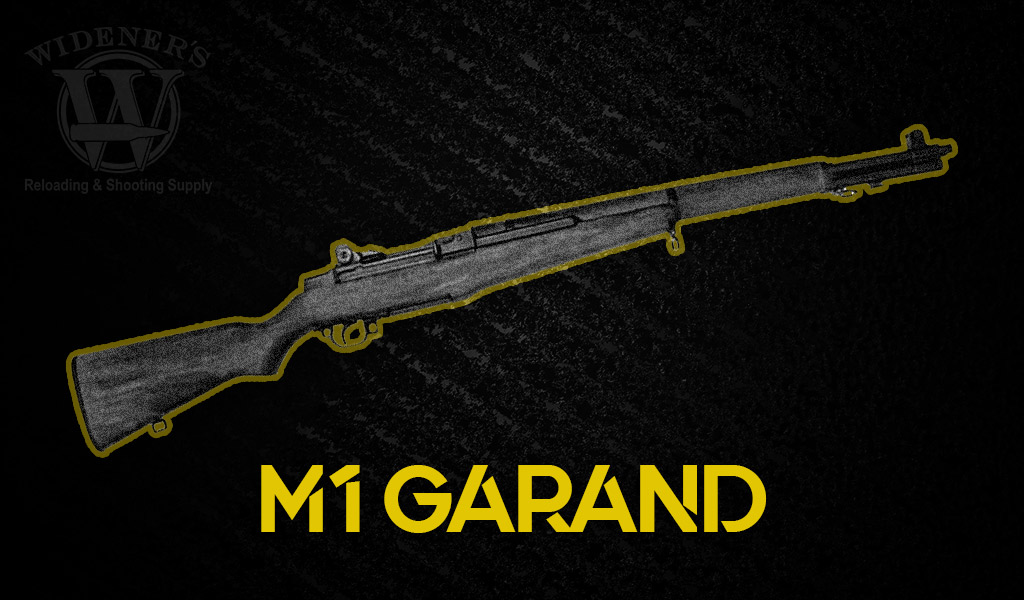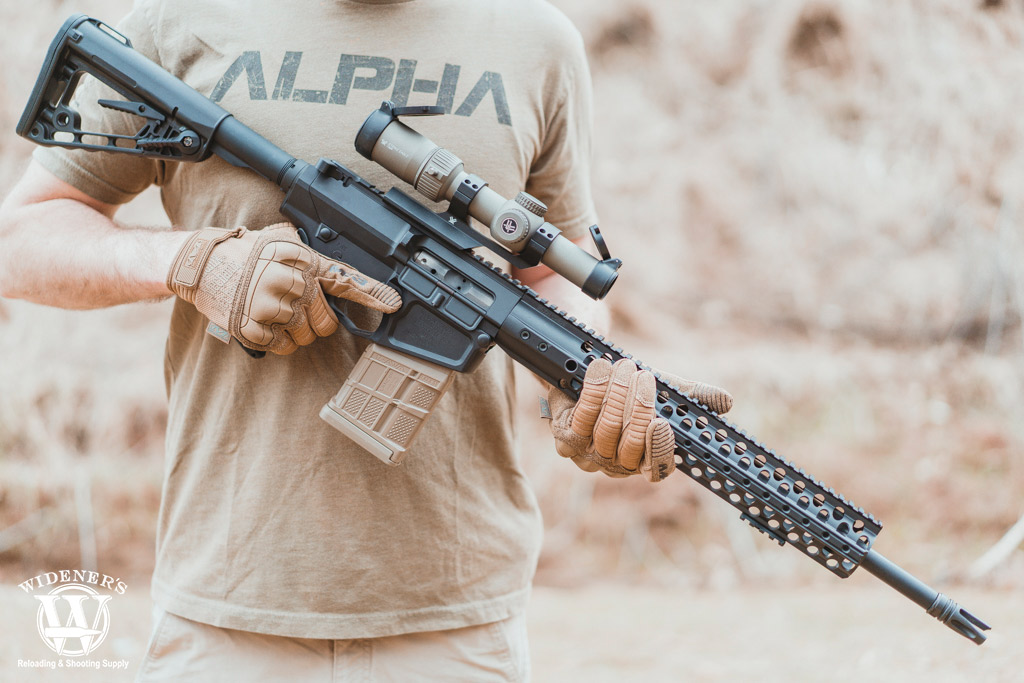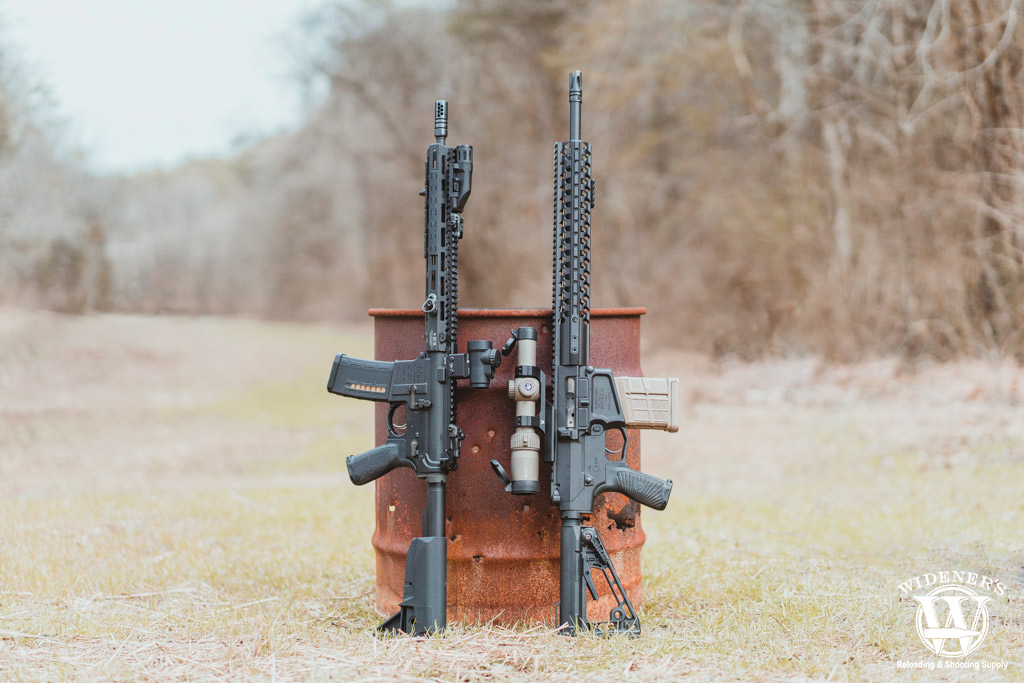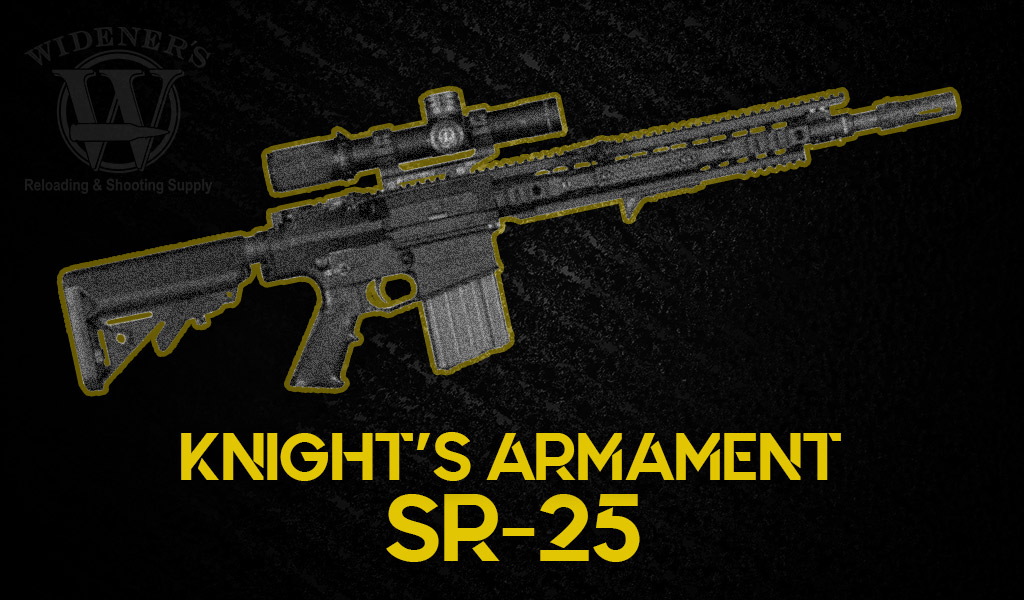

Using the analogy of a family, the AR-10 is the older, more powerful, and more reliable brother of the AR-15. Still, the younger brother has achieved much more popularity and success and led a more exciting life.
Both rifles are part of the Armalite family, and historically, the AR-10 and AR-15 are not its oldest members. In fact, the AR-1 was the first sibling, having been developed as a short-barreled and lightweight weapon for paratroopers. Other AR weapons—namely the AR-5 and AR-7 survival rifles–would follow, but in 1954, the family dynamics would change.
That’s the year former Marine Eugene Stoner joined Armalite, a small-arms manufacturing company in California, as their chief engineer. By 1955, Stoner developed the AR-10, a lighter-weight weapon chambered for the 7.62×51 mm NATO round. It was an innovative weapon, bursting on the scene as U.S. and NATO were looking to replace their service rifles.
The M1 Garand Gets Sidelined

The M1 Garand was in active service from 1936–1958 and saw action in both World War II and the Korean War.
In the aftermath of World War II, the U.S. military began searching for a rifle to replace the M1 Garand. This new service rifle would have to be capable of faster firing with greater accuracy, and it must be fully automatic. Other improvements would include being lighter and having box magazines replace the clips.
Armalite’s AR-10 seemed to fit the bill, and the company entered a prototype into the military trials. There were hopeful of it becoming the next service rifle. The AR-10 had a straight-line design, elevated iron sights, and recoil compensator. But what set it apart was its patented gas system.
Stoner created the AR-10 with a direct impingement system that sends exhaust gasses directly into the receiver, cycling the bolt carrier. Because the gas acts directly on the bolt and carrier, it saves weight, lowers costs, and reduces the mass of the operating parts.
The AR-10 Does Not Become The Next U.S. Service Rifle
Armalite submitted their design as a candidate to replace the M1 Garand. However, it lost out to the Springfield Armory’s T44, which would eventually become the M14. The reason? A composite barrel made of aluminum and steel burst during a torture test. Even though Armalite quickly replaced it with an all-steel barrel, the fate of the AR-10 was already sealed.
Despite matching up well with all the other rifles in the competition, the U.S. Army took the position that the AR-10 was merely a prototypical firearm and could not be tested and ready for action within their time frame. The Army rejected Stoner’s AR-10, and the M14 became their new service rifle.
What Is An AR-10 Battle Rifle?

The AR-10 battle rifle is most commonly chambered in 7.62 NATO/.308 Win and uses 10/20-round detachable magazines.
Although the AR-10 would not see service in the U.S. military, Armalite licensed it to several other nations and arms manufacturers. The Dutch company Artillerie Inrichtingen produced rifles that saw service in Sudan and Portugal and manufactured models for Burma, Cuba, Guatemala, and Italy.
However, in 1957, Armalite once again attempted to develop a service rifle using the AR-10 design. They competed in the U.S. Continental Army Command (CONRAC) rifle program to produce a .22-caliber select-fire rifle weighing six or fewer pounds and firing high-velocity projectiles accurate to 500 yards.
Eugene Stoner teamed up with two other engineers to revive the AR-10 design, only this time firing a .223 Remington round along with other changes. In 1958, the company introduced the AR-15 and began marketing it and the AR-10A, an upgraded version of their original.
Armalite & The AR-15
However, even though the AR-15 generated plenty of enthusiasm, the AR-10A did not attract military buyers in the U.S. or internationally. Incensed over their failure to profit from these rifles, Armalite sold the AR-15 and AR-10 designs to Colt’s Manufacturing Company in 1959.
The AR-15 would become one of the most popular rifles in history, eventually becoming the M-16 rifle, the service rifle for the U.S. military. Its descendant, the M4 carbine, remains in service today. And Artillerie Inrichtingen continued to produce the AR-10 in its original design for a total of about 10,000 rifles. Some of these were sold to commercial customers in the U.S. and Canada.
Today, there are at least twenty manufacturers producing rifles in the style of the AR-10, including Armalite, Smith & Wesson, Ruger, and Windham Weaponry. All are chambered in the 7.62×51 NATO round (.308 caliber), and they are used by hunters, competitive shooters, recreational gun owners, and even military forces throughout the world.
AR-10 VS AR-15: What’s The difference?

The AR-10 rifle (Right) was designed to be the bigger caliber brother of the AR-15 (Left).
The AR-10 and AR-15 have much in common. They both use a direct impingement gas system, have a rotating bolt design, produce light recoil, and use the same trigger group. The AR-15 is approximately two pounds lighter and three inches shorter (standard) than its predecessor. Still, the effective range of the AR-10 is considerably greater. It packs a lot more power and has superior penetration.
The AR-10 fires at a rate of 40 rounds per minute, while the AR-15 gets off 60 per minute. As an M-16 in Vietnam, the AR-15 competed against the enemy’s AK-47 much better than the M-14 had. Plus, the lighter weight and smaller rounds allowed American soldiers to carry enough ammo to have fire superiority over the enemy.
What Is An AR-10 Best At? Long-Distance Shooting
Because of its heavier ammunition and a flatter trajectory, the AR-10 has a longer effective range (650 to 850 yards or more). It is an excellent choice for long-range target shooting. That same capability makes it the first choice of many law enforcement snipers. The AR-10 is also considered a much better option for hunting. It’s capable of dropping game animals in North America or on the African continent.
Knight’s Armament Revival

Knight’s Armament SR-25 is an AR-10-style rifle based on Eugene Stoner’s design.
The AR-10 disappeared from the radar in 1959. It didn’t reappear until 1993, when Eugene Stoner resurrected it while working with Knight’s Armament Company in Vero Beach, Florida. There, he built a new AR-10 and called it the SR-25. SR stood for Stoner Rifle, and the 25 came from adding the 10 in AR-10 and the 15 in AR-15.
The United States Special Operations Command would eventually adopt the SR-25 as the Mk11 Mod0 sniper rifle. It would later become the M110 SASS (Semi-Automatic Sniper System), replacing the U.S. Army’s M24 bolt action sniper rifles.
Today, the AR-10 rifle is used worldwide and can be purchased in the traditional Armalite direct gas impingement style or a short-stroke piston from companies like Sig and H&K.
The versatile rifle shows its merit as a combat rifle, sniper rifle, hunting rifle, and competitive rifle. It’s served the country in combat and in the war on terrorism. People buy it for self-defense or target shooting and its popularity remains among modern shooters. Eugene Stoner didn’t live to see all of his creation’s capabilities, but the AR-10 lives on as proof of his genius.


